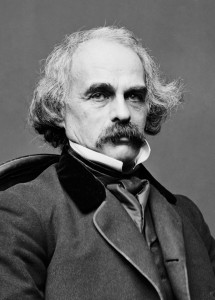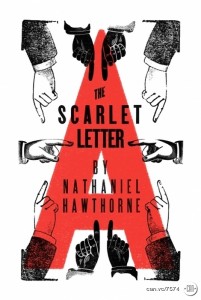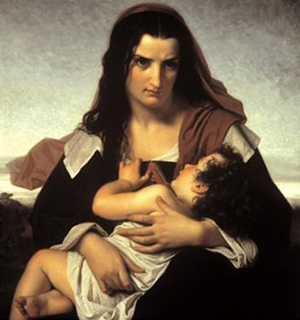English 3P Honors Unit Goal:
After reading and analyzing Nathaniel Hawthorne’s The Scarlet Letter, students will write an essay that analyzes the author’s use of symbolism and archetypes to convey Romantic theme(s) and aesthetic features.
“It may serve, let us hope, to symbolize some sweet moral blossom that may be found along the track, or relieve the darkening close of a tale of human frailty and sorrow.” Chapter I, ‘The Prison-Door’
Essential Questions:
- What are the DARK ROMANTICS’ views on the proper relationship between society and the individual?
- How does Hawthorne reveal ROMANCTIC IDEALS in his novel, The Scarlet Letter?
Romanticism, intuition, Transcendentalism, Dark Romanticism, Romantic Hero, Mood, Setting, Diction, Theme, metaphor, imagery , tone, personification, symbolism, paradox, civil disobedience, allegory, parable, archetype.
 Objective 1: Nathaniel Hawthorne’s Historical Context
Objective 1: Nathaniel Hawthorne’s Historical Context
I. Pre-Reading: Background Video
II. Reading: “Hawthorne on His Way Home” by Lawrence Raab in The New Yorker Magazine
III. Post Reading: Summarize Historical Context of The Scarlet Letter
Objective 2: Explore Symbolism  and Theme in Romantic Literature
and Theme in Romantic Literature
By reading and annotating Nathaniel Hawthorne’s novel The Scarlet Letter, students will be able to 1.) evaluate philosophical attitudes and views of American Romantic literature and 2.) identify Romantic features of natural interconnectedness, individuality, spiritual self-reliance, 3.) analyze the use of symbolism and archetype to convey theme.
I. Pre-reading: Background Video
II. Reading: The Scarlet Letter Novel (E-Book), The Scarlet Letter Notes, Chapter Summaries
III. Post-Reading: Peace, Love, and Puritanism, The Scarlet Letter in The Atlantic Monthly, Socratic Seminar Guide
